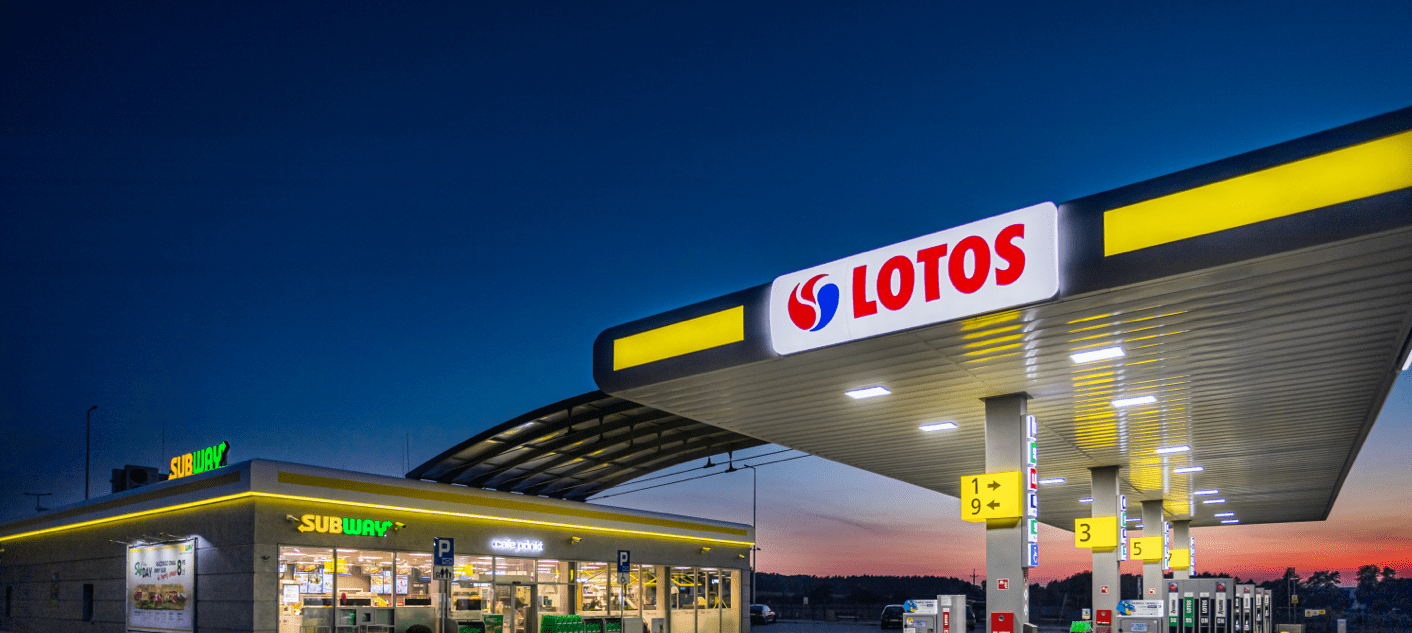
-
103-1
-
103-2
-
103-3
-
TCFD Targets and Metrics Diclosures B
Therefore, in processes that emit pollutants into the air, the LOTOS Group strives to use the best available techniques and practices to minimise the environmental impact.
Direct emissions of greenhouse gases from installations of the LOTOS Group (including those not participating in the emission allowances trading system) are determined on the basis of the methodology set out in Commission Implementing Regulation (EU) 2018/2066. The amount of fuel combusted or input materials processed is multiplied by appropriate calculation factors (calorific value, emission factor, oxidation factor), resulting in total greenhouse gas emissions. Indirect emissions are determined on the basis of the amount of electricity and heat purchased from outside the Group, multiplied by the relevant emission factors, which are published periodically by the National Centre for Emissions Balancing and Management.
-
305-5
Reduction of greenhouse gas emissions is an important element of operation of the LOTOS Group in this regard. Reduction of CO2 emissions in 2020 was achieved as a result of pro-efficiency measures carried out in the LOTOS Group.
| Greenhouse gas emission reduction by emission type | in metric tonnes of CO2 equivalent |
|---|---|
| The Grupa LOTOS | |
| Direct (scope 1) | 7,682 |
| Indirect (scope 2) | n.d.a |
| Other indirect (scope 3) | n.d.a |
| TOTAL | 7,682 |
The LOTOS Group companies do not monitor emission reductions within Scope 3 GHG
-
305-1
-
305-2
Direct GHG emissions in the LOTOS Group (Scope 1)
| Gross direct greenhouse gas emissions in metric tonnes of CO2 equivalent | 2019 | 2020 |
|---|---|---|
| CO2 | 2,027,970 | 2,090,947 |
| CH4 | 0 | 0 |
| N2O | 0 | 0 |
| HFC | 0 | 0 |
| PFC | 0 | 0 |
| SF6 | 0 | 0 |
| NF3 | 0 | 0 |
| TOTAL | 2,027,970 | 2,090,948 |
Installations participating in the EU ETS (the Grupa LOTOS, LOTOS Asfalt, Energobaltic) calculate emissions in accordance with the methodology set out in the EU Regulation No 2018/2066. This methodology is, in the majority of areas, in line with the methodology of the GHG Protocol.
Other companies of the LOTOS Group calculated direct emissions by multiplying the quantities of fuels used in boilers, furnaces and aggregates by emission coefficients published regularly by the National Centre for Emissions Balancing and Management (KOBiZE).
Indirect GHG emissions in the LOTOS Group (Scope 2)
| 2019 | 2020 | |
|---|---|---|
| Gross indirect greenhouse gas emissions (Scope 2) calculated using the location-based method in metric tonnes of CO2 equivalent | 554,167 | 475,560 |
Only electricity and heat purchased and consumed within the Group were taken into account for the calculations. Indirect emissions were calculated by multiplying the electricity and heat purchased and consumed by the coefficients published by KOBiZE from time to time.
-
305-4
GHG emissions intensity
| 2019 | 2020 | ||
|---|---|---|---|
| The Grupa LOTOS | |||
| Greenhouse gas emissions (ranges 1+2) per tonne of processed oil | Mg CO2e /Mg | 0.205 | 0.22 |
| Greenhouse gas emissions (scope 1+2) according to the CWT methodology | kg CO2e /CWT | 26.8 | 27.3 |
The increase in value is due to the negative impact of the COVID-19 pandemic on the fuel market. Refinery installations operated at a lower load and thus less efficiently, which resulted in an increase in the greenhouse gas emission indicator. Installations with a lower load emit more CO2 in relation to the raw material processed than installations with a higher load.
-
OG6
Volume of flared and vented hydrocarbon outdoors and released into the atmosphere in the LOTOS Group
| Location | 2019 | 2020 | 2019 | 2020 |
|---|---|---|---|---|
| Volume of flared and vented hydrocarbon [thousand m3] | Volume of gases released into the atmosphere [thousand m3] |
|||
| Poland | 15,126 | 17,564 | 0 | 0 |
| International waters, Poland exclusive economic zone (LOTOS Petrobaltic platform and BB Platform) (platforma LOTOS Petrobaltic i Platforma BB) | 17,527 | 17,087 | 0 | 0 |
| Lithuania | 0 | 164 | 0 | 0 |
| Total | 32,653 | 34,815 | 0 | 0 |
Other emissions into the atmosphere (besides greenhouse gases)
Data on emissions of other substances into the atmosphere are reported at the consolidated level, i.e. the entire LOTOS Group.
-
305-7
Emissions of other substances into the atmosphere in the LOTOS Group
| Emissions into the air Weight (t) |
2019 | 2020 |
|---|---|---|
| Nitrogen oxides (NOX) | 1,032.40 | 1,029.41 |
| Sulphur oxides (SOX) | 865.2 | 998.51 |
| Volatile organic compounds | 125.4 | 154.94 |
| Particulate matter (PM) | 39.2 | 37.88 |
| Other categories — CO | 350.5 | 249.98 |
| Metals | n.d.a | 0.17 |
| Total | 2,412.70 | 2,470.90 |
The LOTOS Group companies emit gases and dust into air in connection with a wide range of activities. According to national legal requirements, companies emitting the largest amounts of energy pollutants take continuous or periodic measurements. Continuous measurements make it possible to calculate emissions directly on the basis of signals transmitted on an ongoing basis from the measuring devices. Emissions measured during the periodic measurements are referred to the fuel consumed at the time of the measurements and thus coefficients to be used for calculating emissions during the remainder of the year are determined. Companies which do not take measurements often emit pollutants into the air, typically as a result of boiler operation
-
305-6
Emissions of ozone depleting substances (ODS) in the LOTOS Group, including hydrochlorofluorocarbons (HCFC), amounted to 321.11 kg in 2020.

